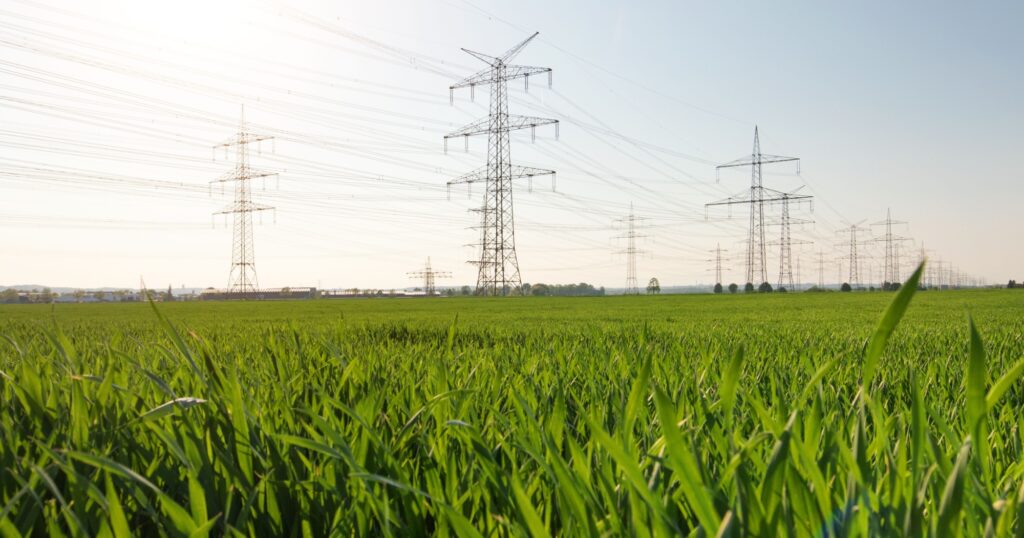Why Landowners Need Legal Help and How Braun and Gresham Can Assist
by Attorney & Counselor, Carly Barton
Understanding transmission line routing is crucial because routing transmission lines can significantly impact the value, use, and enjoyment of your property. When electric utility companies plan new high-voltage power lines, they must determine a route across the landscape, often involving private land. In Texas, property owners potentially affected by these routes have the opportunity to voice their concerns and participate in the decision-making process. Without a clear understanding of your rights and a strong legal strategy, you might end up with a transmission line on your property with little say in the matter.
This blog post outlines what transmission line routing is, what the process looks like in Texas, why landowners need legal counsel, and why Braun and Gresham is the firm trusted by Texas landowners to represent them in these high stakes matters.
What Is Transmission Line Routing
Transmission line routing is the process used by electric utility companies to decide where a new high voltage power line will be located. These transmission lines are part of the larger electrical grid that delivers power across long distances. Routing determines which properties will be affected and where easements will need to be obtained.
In most cases, a utility company will evaluate multiple potential routes and then submit a formal application to the Public Utility Commission of Texas, also known as the PUC. That application includes maps, environmental reports, and proposed routes. The PUC then opens a proceeding to determine which route will be selected and approved.
The stakes for landowners are high. A transmission line can reduce property value, limit how the land is used, and create long term aesthetic and environmental impacts. That is why landowners must act quickly once a routing project is announced.
How the Transmission Routing Process Works in Texas
In Texas, utilities planning new transmission lines must follow a defined regulatory process. Here are the key phases of the process:
-
Planning and Open House Phase
The utility begins by studying the project area and identifying possible routes. This involves engineering assessments, environmental studies, and coordination with various stakeholders. At this stage, the utility is required to hold public meetings, often called Open Houses, to present early route options and gather feedback from landowners and community members.
-
Formal Application to the PUC
Once the utility selects its preferred routes, it submits an application to the Public Utility Commission of Texas to amend its Certificate of Convenience and Necessity. The application includes multiple transmission line segments and route options, maps, property owner lists, and information about environmental and community impacts.
-
Notice to Affected Landowners
If your property is crossed by a proposed route, or you have a habitable structure within a certain distance from a proposed transmission line, you will receive a letter notifying you of the application and giving you the opportunity to become an intervenor in the proceeding. The window to intervene is typically only four to six weeks from the date of notice.
-
Intervention and Hearings
To formally participate in the process, landowners must file a Motion to Intervene. This gives you the right to participate by submit evidence, present expert testimony, and influence the outcome of the routing decision. The process resembles a legal trial and is overseen by an Administrative Law Judge with the State Office of Administrative Hearings. Landowners without legal representation often struggle to be heard effectively at this stage.
-
PUC Decision and Route Approval
After hearing from all parties, the ALJ will make a recommendation to the PUC through a Proposal for Decision. The Commission may adopt the recommended route, modify it, or send it back for additional proceedings. Once the route is approved, the utility has the authority to begin acquiring easements.
-
Easement Acquisition and Condemnation
In this final phase, the utility will contact landowners to negotiate the terms of easement agreements. If a voluntary agreement cannot be reached, the utility may initiate a condemnation proceeding under Texas eminent domain law. Landowners are entitled to compensation for the value of the easement and any damages to the remaining property.
Why You Need an Attorney During Transmission Line Routing
Many landowners believe they can navigate the process themselves or that the utility will treat them fairly. Unfortunately, this is rarely the case. Here is why experienced legal counsel is essential:
- Deadlines Are Short and Critical
- Missing the intervention window means you lose the right to participate in the decision about where the line will go. An attorney can act quickly to file the necessary paperwork and preserve your rights.
- The Process Is Complex and Legal in Nature
- Routing proceedings involve legal briefs, expert reports, cross examination, and formal hearings. Without legal training, most landowners cannot effectively present their case.
- Utilities Have Teams of Lawyers
- The utility is often represented by experienced legal teams whose goal is to get the route approved as efficiently as possible. Leveling the playing field requires having your own legal advocate.
- You May Be Able to Change the Route
- With early intervention, it may be possible to steer the route away from your property altogether. But that requires submitting compelling evidence and working strategically within the PUC process. Legal guidance can make the difference between success and missed opportunity.
Why Choose Braun and Gresham
Braun and Gresham is one of the few law firms in Texas focused exclusively on representing landowners in transmission line routing and condemnation cases. Here is what sets us apart:
- Deep Experience in Routing Cases
- Our attorneys have handled some of the most complex transmission line cases in Texas. We understand the technical, legal, and political dynamics of these cases and know how to build a strong case for landowners.
- Comprehensive Representation
- From the first notice of a project through final compensation, we walk with our clients every step of the way. We work with engineers, environmental consultants, and appraisers to build compelling evidence in support of our clients’ goals.
- Tailored Strategy for Every Landowner
- No two properties are alike. We take the time to understand your land, your goals, and your concerns. Whether you want to prevent the line from crossing your land or negotiate the best possible easement, we create a strategy that works for you.
- Efficient and Cost-Conscious
- We often coordinate groups of landowners to share costs and amplify their influence. Our firm is also committed to transparency in legal fees and helping clients make informed decisions about representation.
- Credibility with Decision Makers
- Because we focus on landowner representation, we have built a reputation with the PUC and utilities as a firm that is knowledgeable, prepared, and professional. That credibility benefits our clients in both contested and negotiated outcomes.
Conclusion: Protect Your Land and Your Rights
If you are a Texas landowner who has received notice about a proposed transmission line, do not wait. Your time to act is limited, and the decisions made during this process can have lasting consequences on your property.
At Braun and Gresham, we are committed to protecting rural landowners with understanding transmission line routing and navigating this complicated, high-stakes process. Whether you are trying to prevent the line from crossing your land or seeking full compensation for the easement, we have the experience and resources to help you achieve the best possible result.
Contact us today to schedule a consultation and learn how we can help you take control of the transmission line routing process before it is too late.


